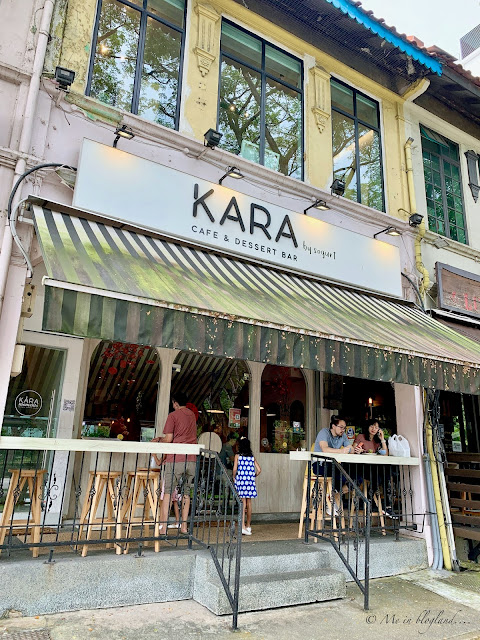Wishing all my readers a Happy New Year 2021
What a year 2020 turned out to be. It was stressful on so many levels and unforgettable (not in a good way) for most people but it was also an unexpected eye-opener. Not taking things for granted is hopefully going to be a way of life moving forward. For me, personally, 2020 also turned out to be a crash course in gratitude so I would like to start this year on the same note.
I humbly extend my heartfelt appreciation to all those of you who have stuck by me over the years and followed my blog. And not just my blog....a big shout out to all those who follow my blog's social media pages. I receive a lot of kind DM's (especially on Instagram) and it is incredibly touching and encouraging. Also, I'd like to thank the companies and sponsors who offer me media invites and opportunities for product and service reviews. Despite not being a "famous" blogger/influencer with a steadfast legion of followers and a jaw-dropping number of pageviews, it is heartwarming to know that there are people out there who are able to look past numbers and recognize content and effort.
It was probably because of staying home much more than usual but I blogged way more the last year compared to the past four years. I cooked and baked a LOT, read roughly two books per month (not something I've been able to do in years) and took part in several blog collaborations. This year I plan to challenge myself further when it comes to experimenting with unfamiliar cuisines and intimidating desserts. I also intend to invest more time and effort in doing book and restaurant reviews. I hope I can continue to bring you interesting and useful content not just in 2021 but in the years to come.
Okay, so now that I've said my piece, let me pass on the reins to my significant other. I know I can always count on him to contribute something of value to my blog so I need to set aside some gratitude for him as well. In this culinary enterprise, the only two tasks I have been involved with include 1. Shaping the potato gnocchi (simply because I like doing it) 2. Pouring (and more importantly, draining!) the glass of red wine on the side. The rest is all him 😄💖
*******************************************************
Hello readers and a happy new year to all of you. I hope you have been well and have escaped the terrible clutches of the global coronavirus pandemic. With the arrival of 2021, let us hope that the journey to reach the light at the end of the tunnel is a short one.
Today I have for you my tried and tested (repeatedly) recipe for homemade potato gnocchi.
After several trials that included extensive reading, tweaking ingredients and ratios, trying out (and annihilating) different kitchen tools and optimizing cooking methods, I am satisfied with my rendition of potato gnocchi.
This Italian pasta dish consisting of dough dumplings is undoubtedly a tricky dish to get right. I can't say that I've mastered it even now because no two times of making gnocchi will turn out exactly the same.
Well-made gnocchi has a light, fluffy and melt-in-the-mouth texture. It takes a certain amount of intuition (that comes only with experience) to know if your dough is good enough to yield tender gnocchi. So if you are a newbie, don't be discouraged if your very first attempt doesn't meet your expectations. Try, try and then try some more until you get there. It is a rewarding endeavor - my family can attest to that.
Before making gnocchi for the first time, I read this very useful article from
Serious Eats. Armed with this newfound knowledge, I embarked on my gnocchi-making experiments. It took me around four attempts stretched across many months to attain gnocchi nirvana. I can honestly say that I have gained valuable insight and intuition from my trials and tribulations.
From my personal experience, there are a few important considerations in gnocchi-making,
- First and foremost is the kind of potatoes you use. You will invariably see Russet potatoes used in gnocchi recipes and this is with good reason. Russets are starchy and have less moisture making them an ideal choice for gnocchi. Potatoes that have more moisture in them require more flour and consequently, the gnocchi may turn out dense and chewy (definitely not what you want). Desiree and Yukon Golds are frequently suggested varieties too
- I have found that the best way to cook the potatoes for gnocchi is to place them on a rack and bake them in the oven. Water is the enemy of good gnocchi dough so always opt for baking over boiling. Using a fine potato ricer when the baked potatoes are still hot is a good way to ensure you get fluffy gnocchi. This is because the steam from the potatoes billow out instead of being absorbed back into the potato flesh as it cools. I am on my third potato ricer and I think this one's a keeper. In case you don't have a potato ricer, you could finely grate the potatoes as well.
- So, the next question you may have is to egg or not to egg. Well, there are recipes that do both but the addition of egg yolks makes a more cohesive dough and the gnocchi tend to hold their shape during the cooking process (both desirable qualities especially if you are a rookie gnocchi-maker).
- The flour-to-potato ratio is quite critical and determines the texture of your gnocchi. Understand that the less flour you can add to the potato while still managing to make a cohesive dough, the better.
- With gnocchi, kneading too much is certainly not a good thing. If you overwork the dough, you will develop the flour's gluten too much resulting in hard and gummy gnocchi. But underwork it and it can fall apart. A great trick is to start with a bench scraper and "cut" the flour into the potato to mix the ingredients together instead of working it with your hands all the way. Only towards the end you can use your hands to pat and fold the dough into a cohesive mass. The key is to be as delicate and gentle as you can while handling the dough
- Most of the time, gnocchi have ridges on the surface. It is thought to hold the sauce better and not to mention, it looks much fancier. You can create the ridges using a fork or a little wooden paddle called rigagnocchi which is designed specifically for that purpose. Earlier I used to use a fork but I've recently purchased a gnocchi paddle. Both work well. Some chefs claim the ridges are not necessary and skip this step entirely. It is your call.
- After shaping the gnocchi, I recommend that you let them rest/dry for about 30 minutes. You can also consider freezing them to make handling them easier and retain their shape during cooking
- Don't overcook the gnocchi otherwise they can become dense and chewy
- Don't use a colander to drain the gnocchi because they are delicate and can get squashed. Use a slotted spoon to remove them from the pot of lightly boiling water and transfer to the sauce. Again, toss gently to coat and avoid any vigorous mixing.
I have focused most of my attention on preparing the potato gnocchi from scratch in this post. I haven't attached too much importance to the sauce. Generally, we enjoy potato gnocchi with three kinds of sauces - basil pesto, sage-walnut-brown butter sauce and a sun-dried tomato and herb cream sauce. You will find the recipes for the latter two sauces below the recipe for potato gnocchi. You could also consider doing a creamy gorgonzola sauce (which is something we plan to try out next) or choose among alfredo, carbonara or primavera sauces. We don't prefer tomato-based sauces all that much and so we tend to avoid pomodoro. But you can whip up any sauce that catches your fancy for the potato gnocchi.
I hope you will try this recipe because the end result is delicious and will guarantee be a family favourite.















